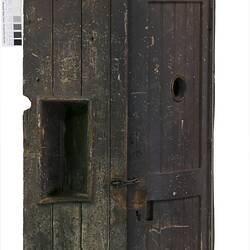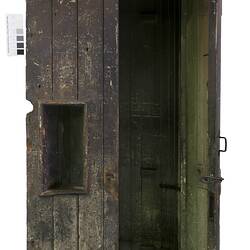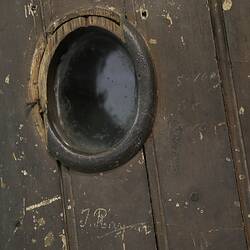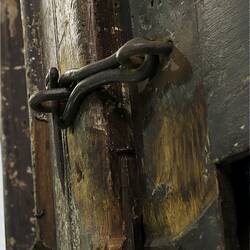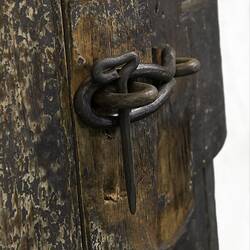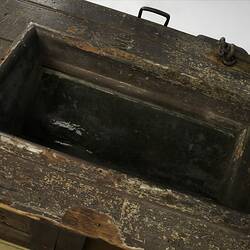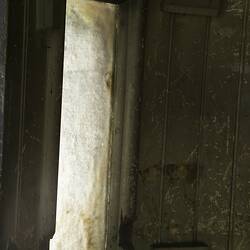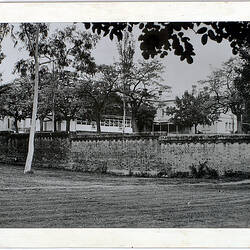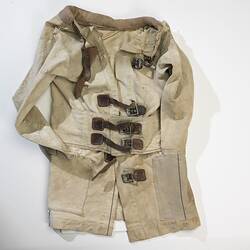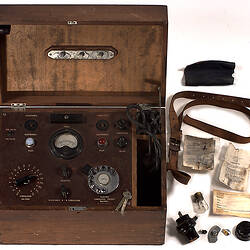Summary
Isolation cell (also known as an isolation chamber) circa 1870. This structure was recovered by Dr Charles Brothers from the Blacksmith's Shop at Kew Asylum, Victoria, Australia.
The cell shows evidence of shelves and nails and is believed to have once been used as a storage cupboard within the asylum's Blacksmith's Shop during the 1930s.
It was suggested that it had previously been utilised as a solitary shower cabinet for water treatment of asylum patients. However, research undertaken by Museum Victoria conservators revealed that the timber had not been exposed to water. We now believe that at some stage the cabinet was used as an isolation cell. It is only just large enough for one person to stand in.The internal and external walls are heavily scratched.
Physical Description
The cabinet is a tall, round structure of stout, tongue and groove timber, with straight wings each side of front to fit into a corner. It has a curved door with metal handle and heavy, loop-style latch on outside. 2 mortice locks have been removed. Door has small, oval window just below head height. There is another lower, larger, oblong window, beside door on left which is deeply set, at an angle to outside wall. Cabinet has decorative overhanging top around front. Solid outer framework of 4 encircling wooden rings. Painted cream inside. Has small gap between wall & roof. Leather straps nailed each side of door to secure patient in chair. Original floor replaced. Has been used for storage.
Significance
Example of isolation and restraint device used in psychiatric hospitals in Victoria, Australia.
More Information
-
Collection Names
-
Collecting Areas
-
Acquisition Information
Donation from Kew Mental Hospital (Asylum), Office of Psychiatric Services, May 1985
-
Place & Date Made
Kew Mental Hospital (Asylum), Melbourne, Greater Melbourne, Victoria, Australia, circa 1870
-
Place & Date Used
Kew Mental Hospital (Asylum), Kew, Greater Melbourne, Victoria, Australia, circa 1910
-
Inscriptions
Carved on ouside wall beside window: M6.
-
Classification
Medicine & health, Mental health - institutional life, Building fittings
-
Category
-
Discipline
-
Type of item
-
overall dimensions
87 cm (Length), 87 cm (Width), 248 cm (Height)
-
References
Aust. N.Z. J. Psychiatry (1968) 2:101 Stoller, A & Emmerson, R. Tucker, G.A. Lunacy in many lands. 1887
-
Keywords
Building Security, Healthcare & Medicine, Mental Health, Mental Health Institutions, Psychiatric Hospitals, Making History - Psych Services, Psychiatric Institutions, Psychiatric Services

